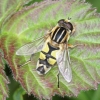Geology Site Account
A-Z Geological Site Index
UfdG20, Hatfield Forest erratic boulders , HATFIELD FOREST, Uttlesford District, TL54041980, Notified Local Geological Site
|
Site category: Boulders - puddingstone Site name: Hatfield Forest erratic boulders Grid reference: TL 5404 1980 Brief description of site: Between Takeley and Bishops Stortford lies Hatfield Forest, 1,100 acres of medieval woodland owned by the National Trust. On the southern edge of the lake were three partially submerged and largely inaccessible boulders about 1.4 metres long, two of Hertfordshire puddingstone and one of sandstone. They were discovered when the lake was created in about 1750. Adjacent to the Shell House a boulder of limestone(?) that protrudes from the ground. The National Trust has now moved several of the lakeside boulders to near the Shell House so they are more accessible. ---------------------------------------- Details The largest of the Hertfordshire puddingstone boulders is 135 x 90 x 70 centimetres in size. The sandstone boulder is 140 x 110 x 70 centimetres in size. The limestone boulder is approx. 80 x 45 centimetres in size. Hertfordshire puddingstone was formed around 55 million years ago when the climate of Britain was hot and a layer of pebbles beneath the surface of the ground became cemented with quartz. They are thought to have originated in Hertfordshire, hence the name, and carried to Essex during the Ice Age by the River Thames when it flowed north of its present course. However, there may have been a closer source of this enigmatic stone. It is likely that these boulders were subsequently picked up by the Anglian Ice Sheet from the Thames gravel and dumped here when the ice melted. The limestone and sandstone may have originated much further north and brought here directly by the ice sheet.
|
|
Reference: Lucy 2003a
Notified: July 2024
Geology Site Map
A-Z Geological Site Index
























